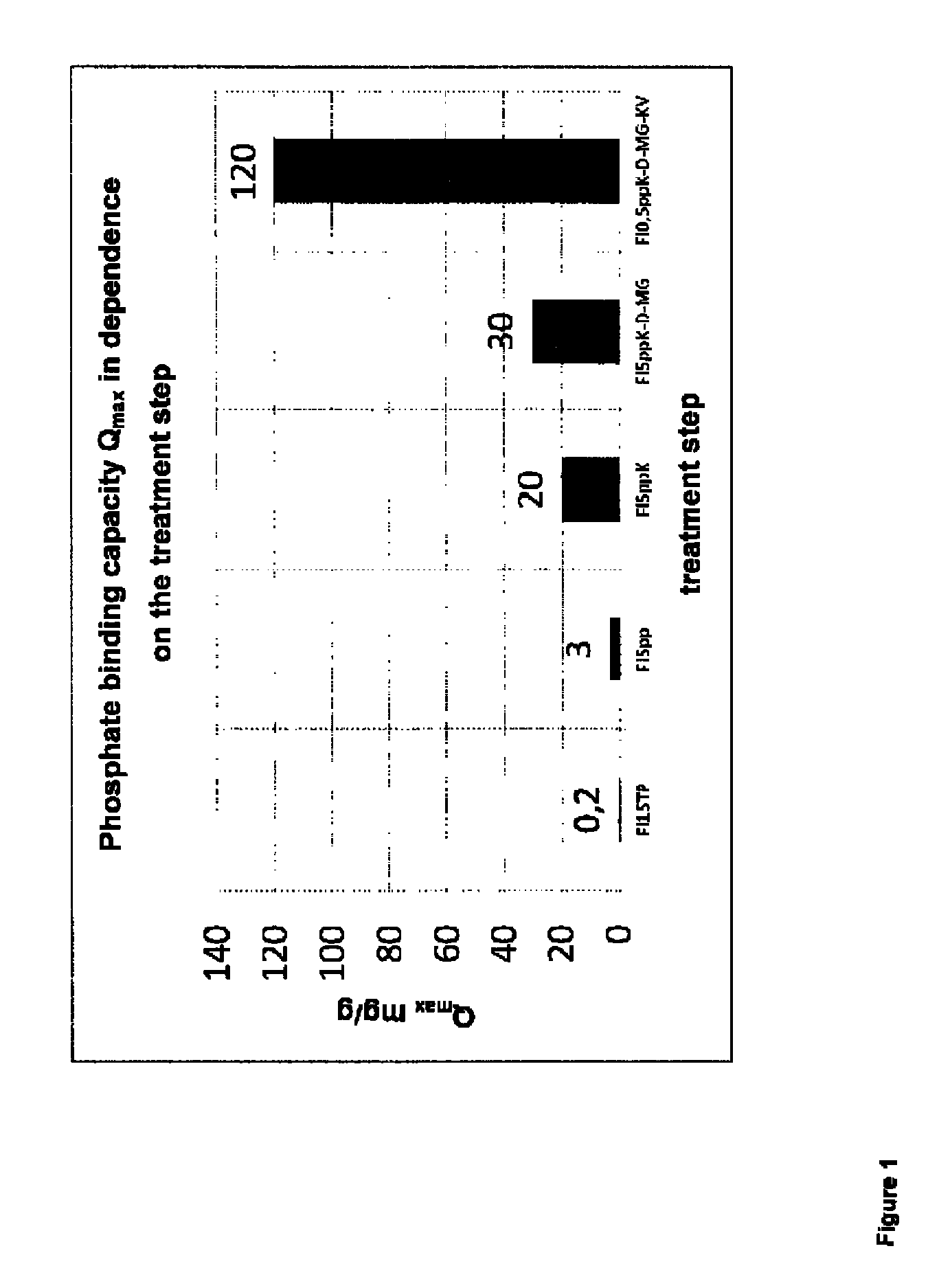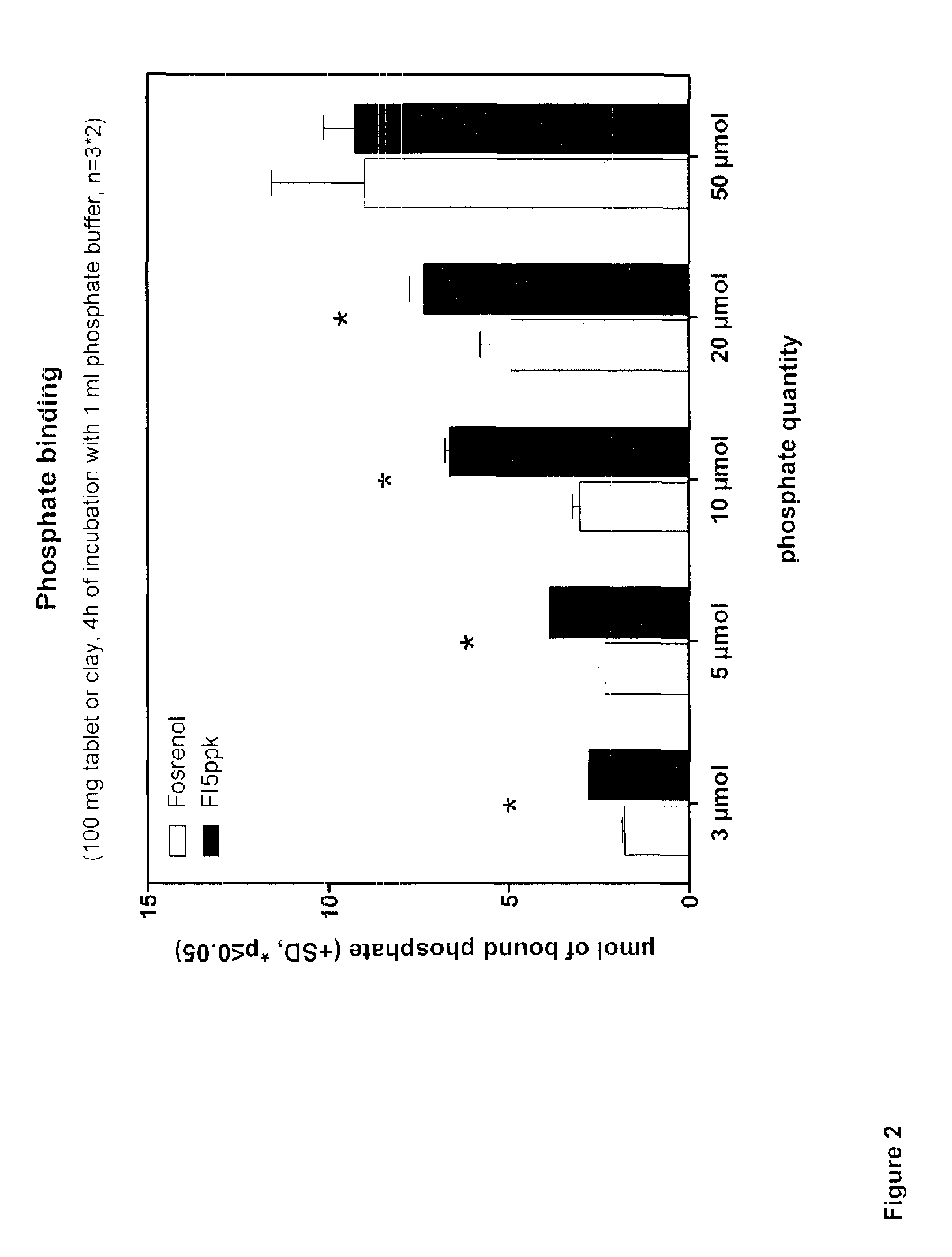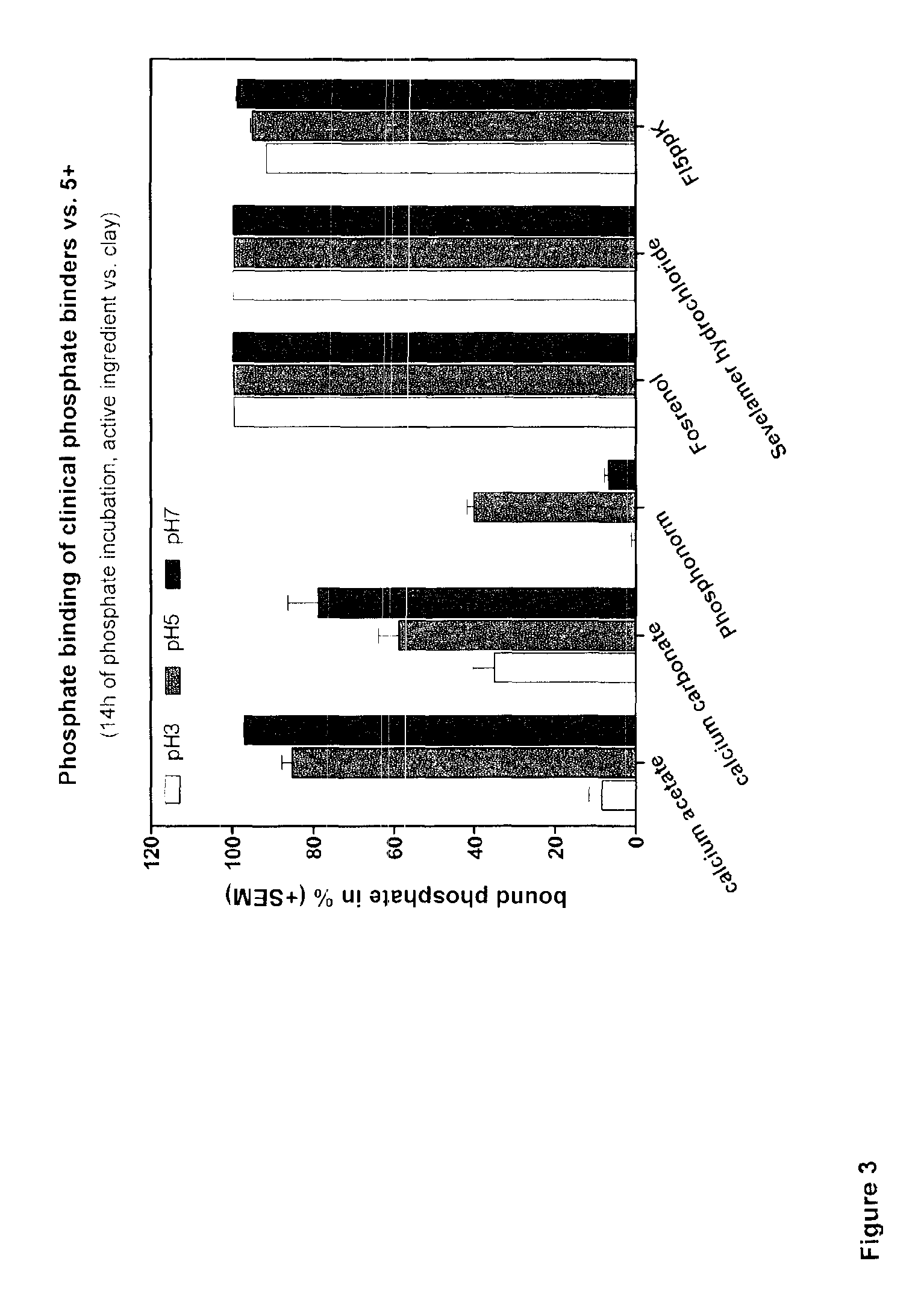Clay mineral for reducing inorganic phosphates, in particular in renal replacement therapy
a technology of inorganic phosphate and calcium chloride, which is applied in the field of mineral compounds, can solve the problems of phosphate concentration in the plasma, dialysis patients exhibit a significantly higher morbidity and mortality rate than the normal population, and the deposition of phosphate, so as to reduce the concentration of inorganic phospha
- Summary
- Abstract
- Description
- Claims
- Application Information
AI Technical Summary
Benefits of technology
Problems solved by technology
Method used
Image
Examples
Embodiment Construction
[0068]In the present case, a muscovite-montmorillonite-illite alternate-layer mineral was examined for its properties as phosphate binder, wherein the clay mineral was exposed to various treatment steps.
[0069]The Friedland muscovite-montmorillonite-illite alternate-layer mineral is characterized by a small particle size with a large surface area and swellable single layers of sodium-montmorillonite, which provide the silicate with a high water absorption capacity. At the same time, the elements present in the individual interlayers can easily be exchanged against inorganic and organic substances. This process is reversible and of central importance for the adsorption behavior of the Friedland alternate-layer mineral. An essential advantage of the Friedland silicate as compared to other silicates from other worldwide deposits is the low release of aluminum ions. This could be demonstrated in a study of the Federal Institute for Geosciences and Natural Resources (BGR). One cause for t...
PUM
 Login to View More
Login to View More Abstract
Description
Claims
Application Information
 Login to View More
Login to View More - R&D
- Intellectual Property
- Life Sciences
- Materials
- Tech Scout
- Unparalleled Data Quality
- Higher Quality Content
- 60% Fewer Hallucinations
Browse by: Latest US Patents, China's latest patents, Technical Efficacy Thesaurus, Application Domain, Technology Topic, Popular Technical Reports.
© 2025 PatSnap. All rights reserved.Legal|Privacy policy|Modern Slavery Act Transparency Statement|Sitemap|About US| Contact US: help@patsnap.com



